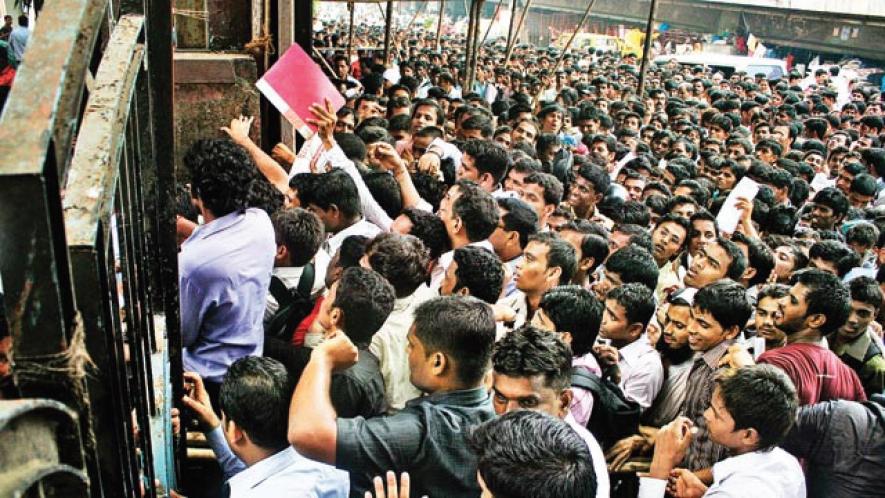Context
Unemployment in India stands as a pervasive challenge, casting shadows over the aspirations of its burgeoning youth population. As the International Labour Organization (ILO) and the Institute for Human Development (IHD) bring to light, the face of this crisis often wears the guise of a young graduate, accentuating the urgency for targeted policy interventions. However, delving into the multifaceted landscape of unemployment in the major states of India, excluding the Union Territories, reveals a complex tapestry of factors driving this phenomenon. Drawing upon the insights gleaned from the Periodic Labour Force Survey (PLFS) of 2022-23, this analysis seeks to unravel the intricate web of causes behind unemployment and shed light on potential pathways for addressing this pressing issue.
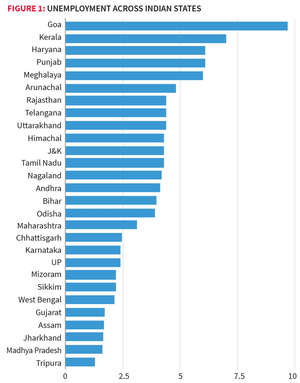
Unemployment Across Indian States: An Overview
The heterogeneous landscape of unemployment rates across Indian states during the period of 2022-23 reveals stark disparities and nuanced regional patterns. Topping the chart with an unemployment rate nearing 10%, Goa emerges as a striking outlier, its figure towering over the national average by more than threefold. Curiously, four out of the top five states grappling with high unemployment—Goa, Kerala, Haryana, and Punjab—boast relatively higher economic prosperity. Conversely, Maharashtra and Gujarat, beacons of economic prowess in western India, boast unemployment rates significantly lower than the national average. Delving deeper, we find a regional pattern, with northern states such as Jammu and Kashmir, Punjab, Haryana, Uttarakhand, and Himachal Pradesh, along with most southern states barring Karnataka, registering unemployment rates surpassing the national average.
A nuanced examination further unveils that among the 27 states under consideration, a dozen showcase unemployment rates trailing below the national average. Maharashtra, Uttar Pradesh, and Madhya Pradesh, despite their demographic diversity, contribute significantly to this trend, albeit posing a conundrum given their per capita incomes falling short of the national average. This enigmatic relationship underscores the intricate interplay between economic indicators and unemployment dynamics, beckoning a deeper dive into the underlying determinants shaping this narrative.
Deciphering the Determinants of Unemployment
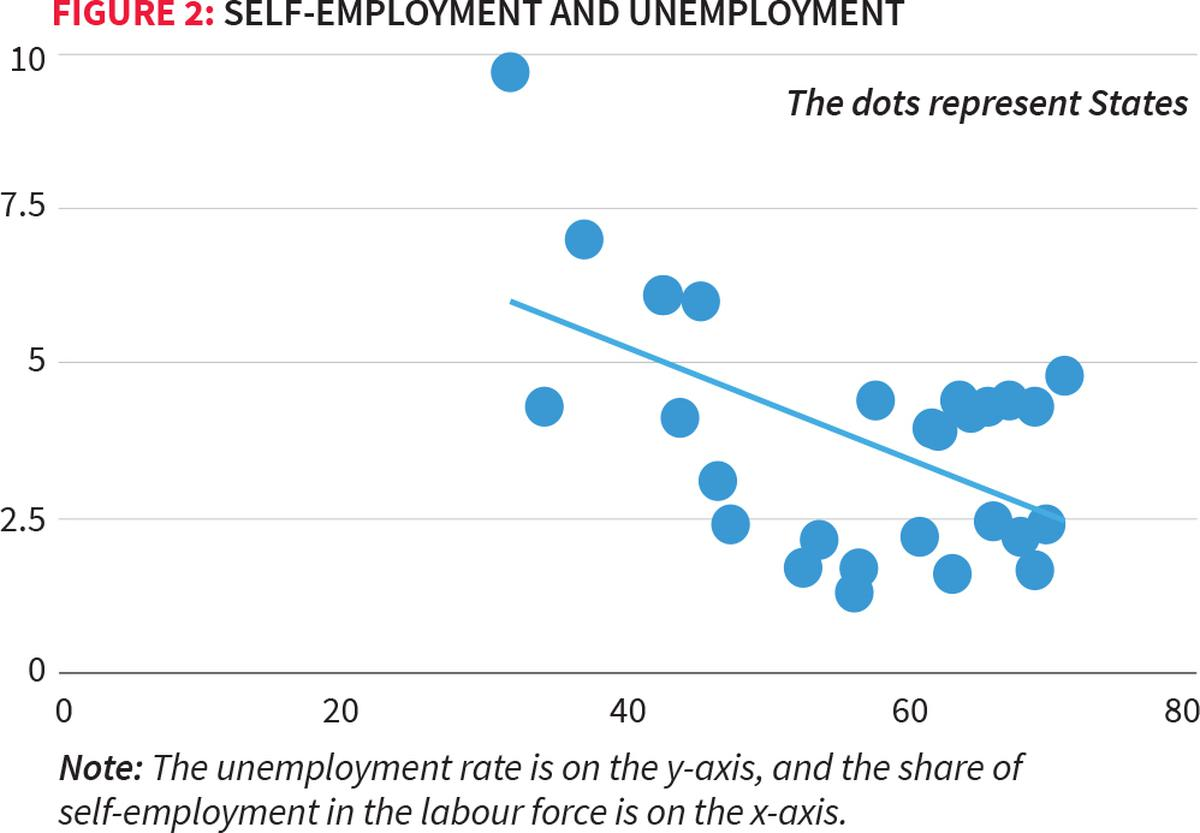
The interplay between unemployment rates and the prevalence of self-employment within the labor force across Indian states paints a revealing picture. A discernible downward trend line hints at a negative relationship between the two variables, suggesting that states boasting a higher proportion of self-employed individuals tend to exhibit lower unemployment rates. Yet, the causality remains elusive; does a dearth of self-employment opportunities precipitate high unemployment, or do states grappling with unemployment witness a reluctance among individuals to embrace self-employment ventures? Here lies a critical juncture necessitating a nuanced understanding of the intricate web of socio-economic dynamics at play.
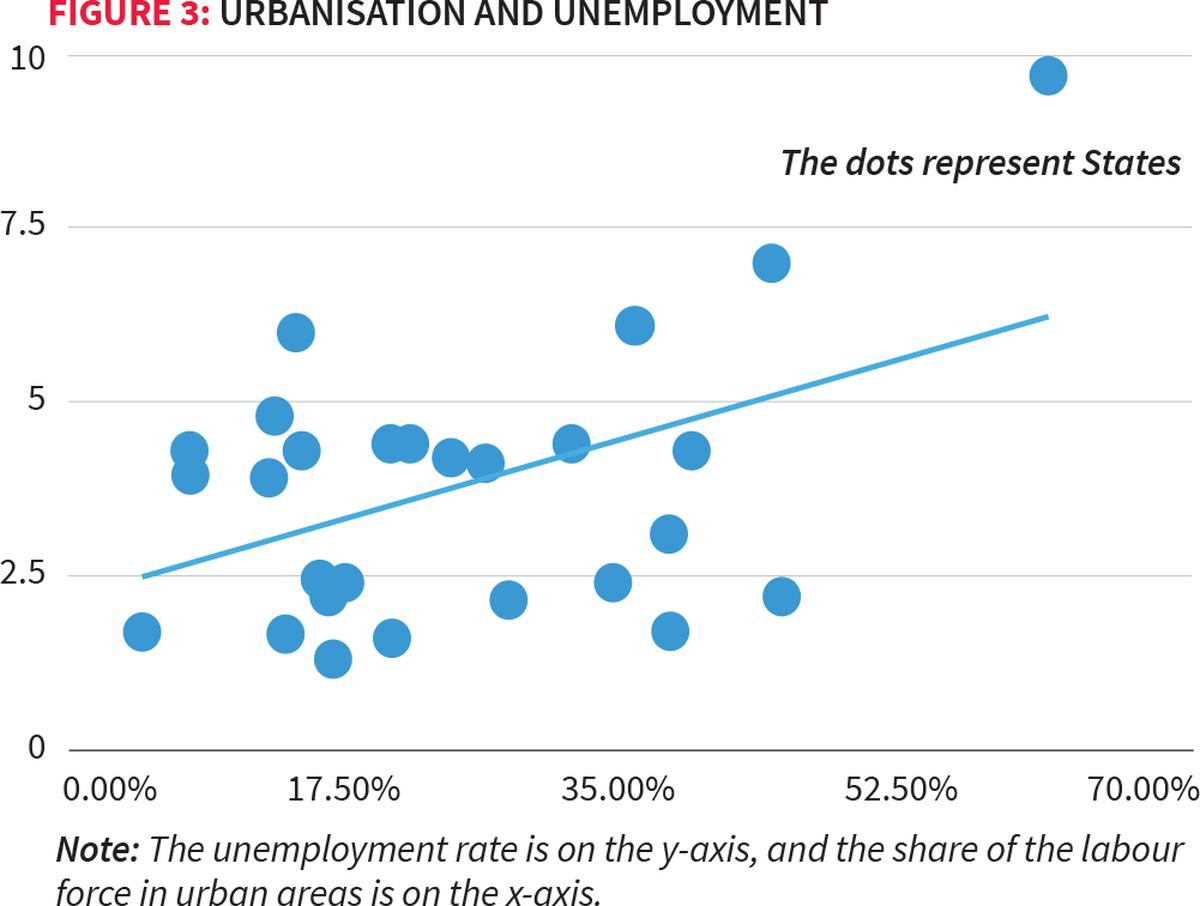
A delve into the urban-rural dichotomy further unravels the labyrinthine nature of unemployment. The positive correlation between the urban share of the labor force and unemployment rates spotlights the pronounced uptick in unemployment within highly urbanized states. This narrative elucidates the plight of states like Goa and Kerala, ensnared by the twin shackles of urbanization and unemployment, juxtaposed against the relatively buoyant employment landscapes witnessed in agrarian-dependent states such as Uttar Pradesh, Jharkhand, and Madhya Pradesh. Indeed, the conundrum of unemployment finds resonance in the juxtaposition of urban aspirations against rural resilience, underscoring the imperative of tailored policy interventions.
Navigating the Nexus of Education and Employment
Amidst this labyrinth of unemployment, the nexus between education and employment emerges as a focal point of contention. The positive relationship between the prevalence of graduate labor and unemployment rates across Indian states lays bare the paradoxical reality confronting policymakers. Kerala, with its highly educated labor force, grapples with soaring unemployment rates, contrasting starkly with the relatively subdued figures witnessed in Gujarat and Maharashtra, despite their lower share of graduate labor. This paradox beckons us to probe deeper into the underlying mechanisms driving this discord, unraveling a tapestry woven with myriad socio-economic threads.
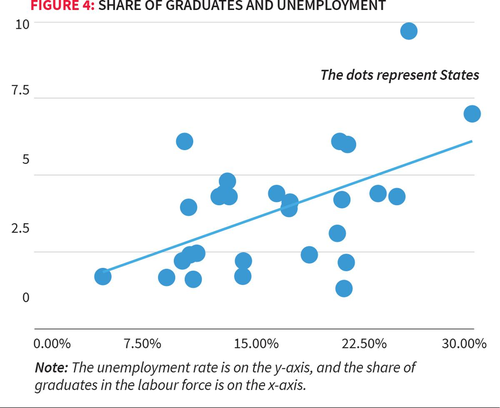
Could it be that graduates, armed with degrees but devoid of requisite skills, find themselves at odds with the exigencies of the modern sector? Or does the specter of unemployment stem from the disjuncture between graduate aspirations and the realities of job markets? These questions underscore the imperative of fostering synergies between educational curricula and industry imperatives, transcending traditional paradigms to nurture a workforce poised for the demands of tomorrow.
The Way Forward
In the wake of these revelations, charting a course forward demands a multifaceted approach that transcends traditional silos to address the root causes of unemployment. While bolstering educational infrastructure remains a pressing imperative, the focus must extend beyond pedagogical paradigms to embrace holistic skill development initiatives tailored to the demands of a rapidly evolving job market. Moreover, policy interventions must reconcile the urban-rural dichotomy, fostering an inclusive growth trajectory that leverages the resilience of agrarian economies while harnessing the potential of urban centers as engines of innovation and employment.
As India traverses the labyrinthine landscape of unemployment, policymakers stand at a crossroads, armed with the insights gleaned from this analysis. By forging partnerships across sectors, fostering synergies between academia and industry, and nurturing an ecosystem conducive to entrepreneurship, we can pave the path toward a future where every individual finds fulfillment and opportunity in gainful employment. Thus, as we bid adieu to the confines of this analysis, let us embark upon a journey of collective endeavor, navigating the uncharted waters of unemployment with resilience, resolve, and unwavering commitment to building a brighter tomorrow for generations to come.
|
Probable Questions for UPSC Mains Exam
|
Source – The Hindu

